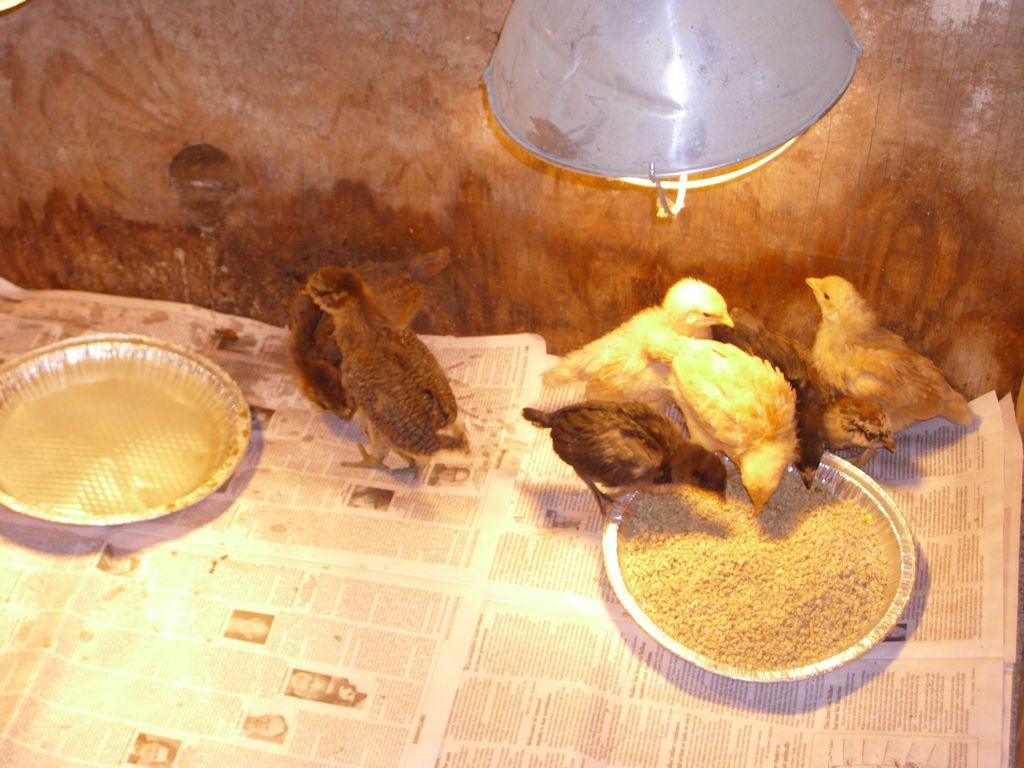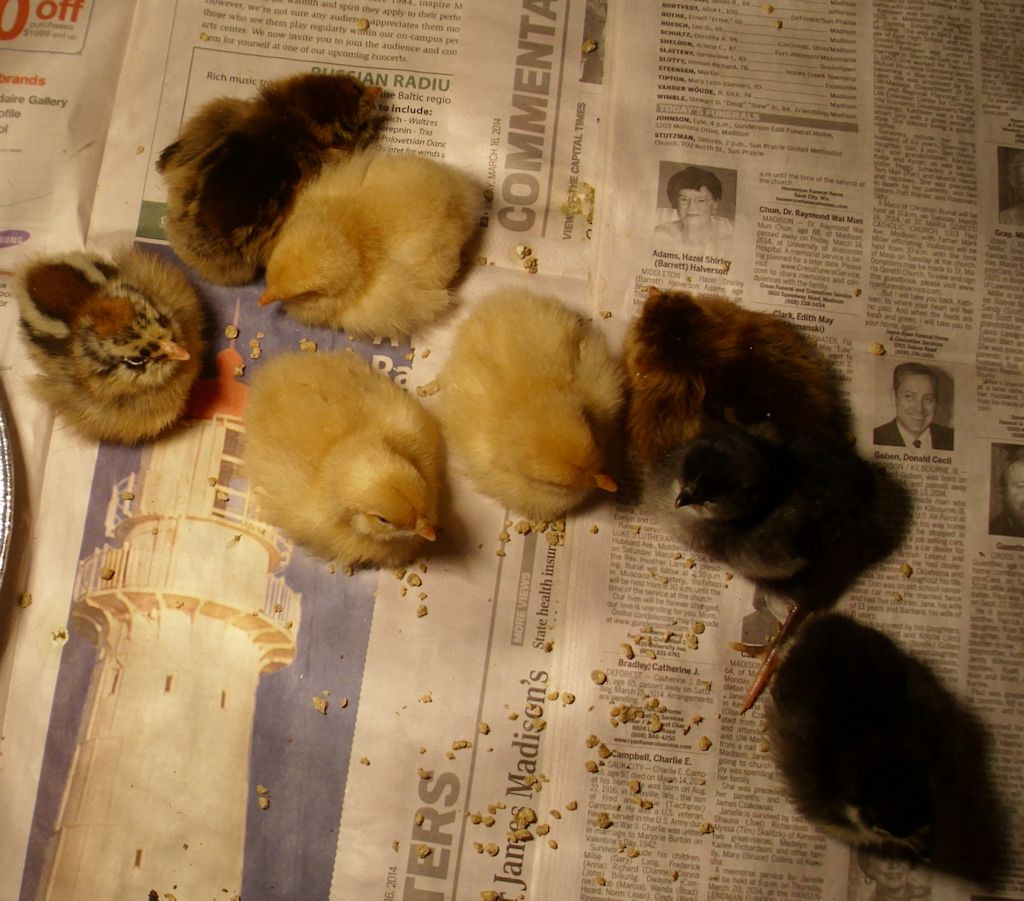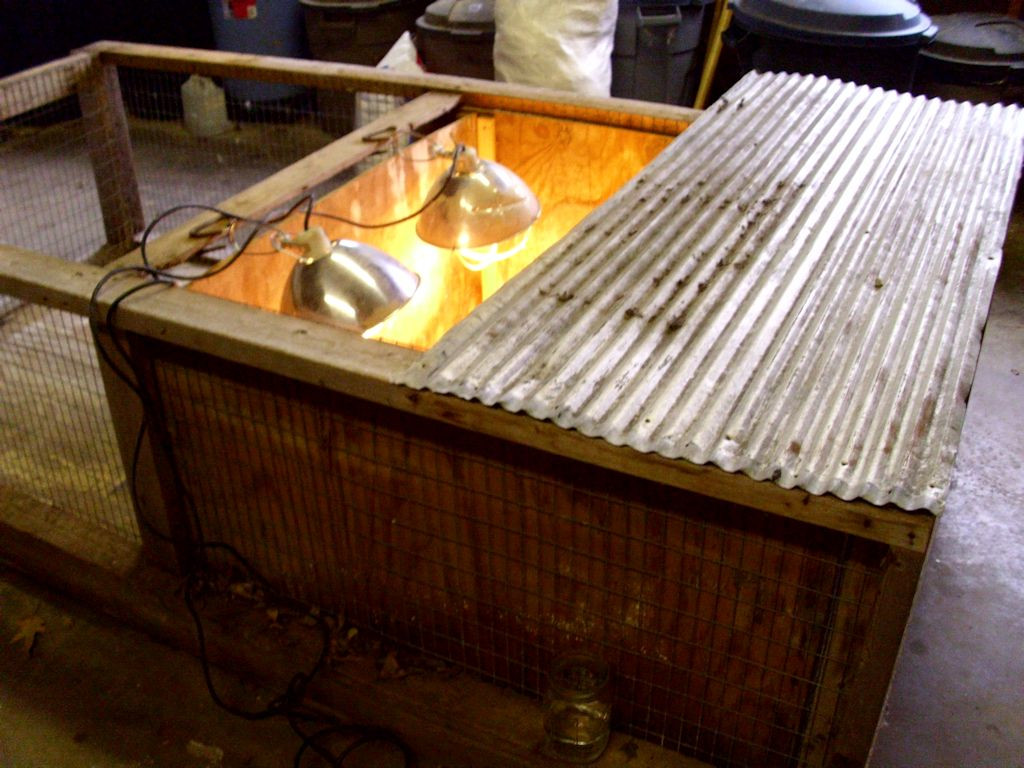People keep asking me about the chicks that I originally talked about in Spring Chicks. They really are cute and they’re starting to get quite big. They’re about four weeks old now. The weather had been especially cold for a while, but things have warmed up, so the heat lamp is off now. The fact that my little birds are getting feathered out quite nicely helps. I still have the sides up in their little brooder box. I tried letting one out in the other compartment the other day and she quickly decided that it might be nice to try to get out. Another week will likely do wonders and I’ll finally be able to consider letting them out into the bigger area.
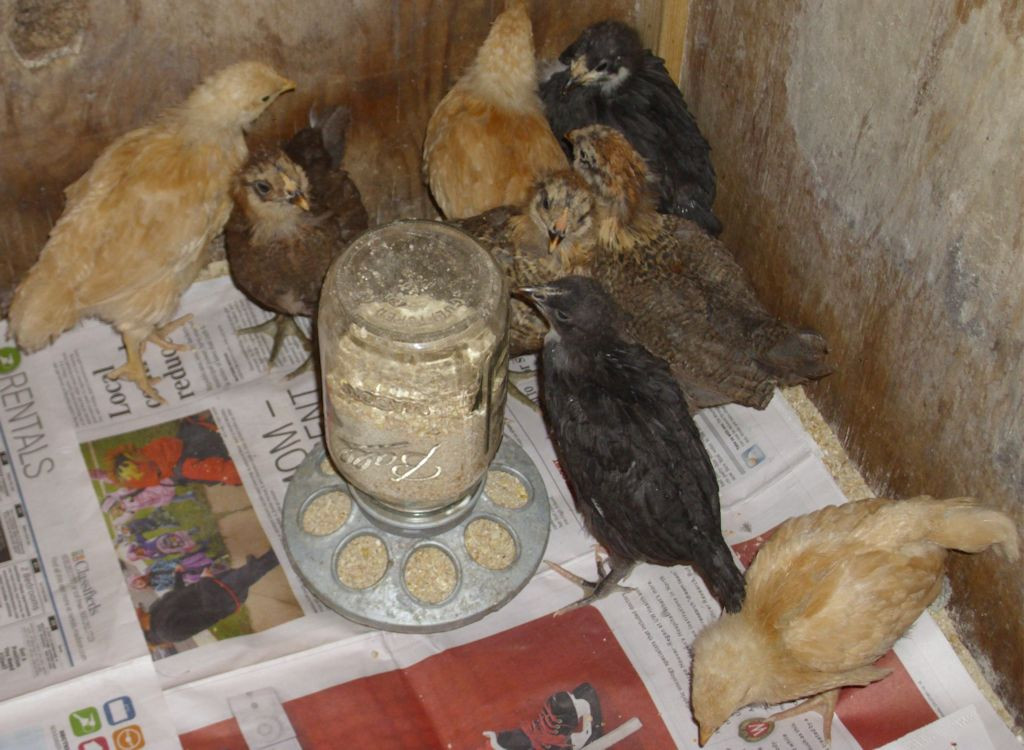
I’m still feeding my new hens chick starter, but I’m mixing in a little layer mash. I want them to get used to the layer mash slowly. Eventually, they’ll get layer mash mixed with some goodies. Of course, I feed the full sized hens all sorts of things and they help themselves to bugs when they’re out pecking about. Good laying hens actually need a diverse diet and given a choice, they’ll find it if you don’t supply it. However, for the short term, I’m keep my little birds on a strict diet to help ensure they grow up healthy and happy.
A funny thing happened this week. I had been feeding the chicks using a pie tin because they weren’t able to use any of the feeders I have. Using the pie tin leads to feed waste because the birds spread it all over their cage and then won’t eat it because it isn’t in the pie tin. You can see from the picture that they now have a new feeder. The round feeder is nice because all the birds can get to it easily. Chickens are suspicious, however, and my chicks wouldn’t have anything to do with that new feeder. A few approached it and jumped back—perhaps it’s a snake, they thought! Eventually, the chicks did warm up to the new feeder, so now it isn’t too uncommon to see one of the chicks sitting on top of the jar containing the feed. (You might wonder why I’m using a glass jar instead of the plastic jar that sometimes comes with the round feeders. The plastic jar flexes, so it comes off the feeder quite easily, which means wasting feed instead of dispensing it efficiently, and it also isn’t as easy to see just how much feed is left in the jar.)
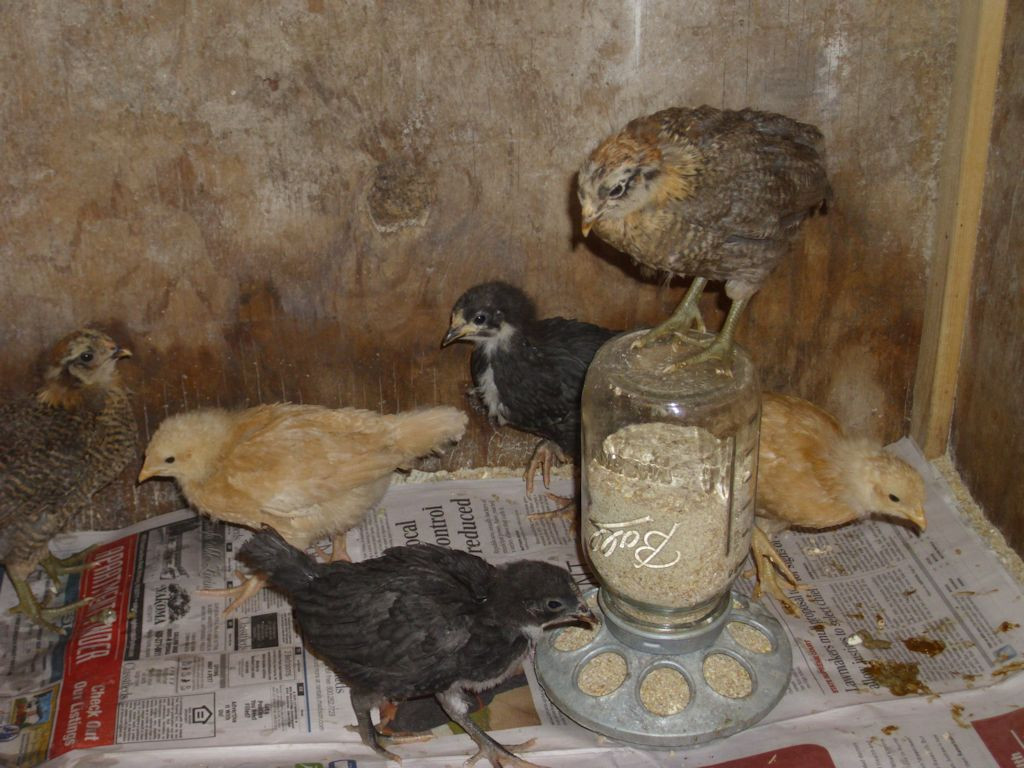
It’s about this time in their growth cycle that the chicks start to get quite defiant if you pick them up. They want to be out on their own—running about, peeping at the other chicks. When tired, the chicks still pile up on top of each other. Even though they aren’t particularly interested in contact, I’m still working with them. Once they’re up in my hand, they do get comfortable. I had one fall asleep the other day in my hand and I watched it sleep for a while. The second I moved my hand the wrong way though the chick was up and ready to run about again.
In looking at my weight readings, I find that a meat chicken would be about twice of weight of a layer at this point and probably about twice the size too. Layers definitely grow slower than meat chickens do, so you really can’t compare the two. As they grow, I’m finding that these layers are also getting more and more personable. When I hear loud peeping now, I often know the culprit even without looking into the brooder box.
I’ll keep providing updates as long as people continue to ask me about my new hens. Make sure you send any questions you might have about them to [email protected].

